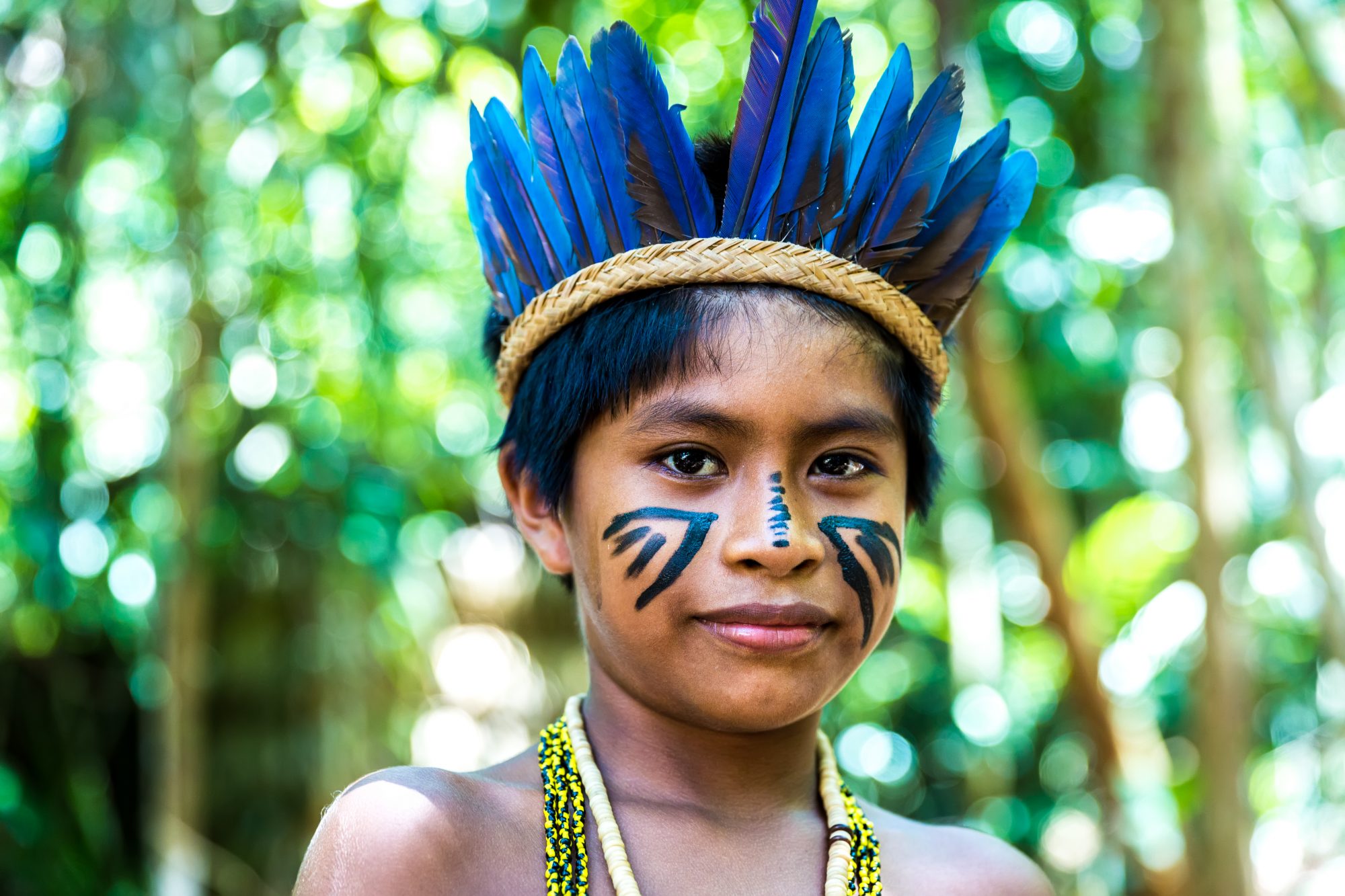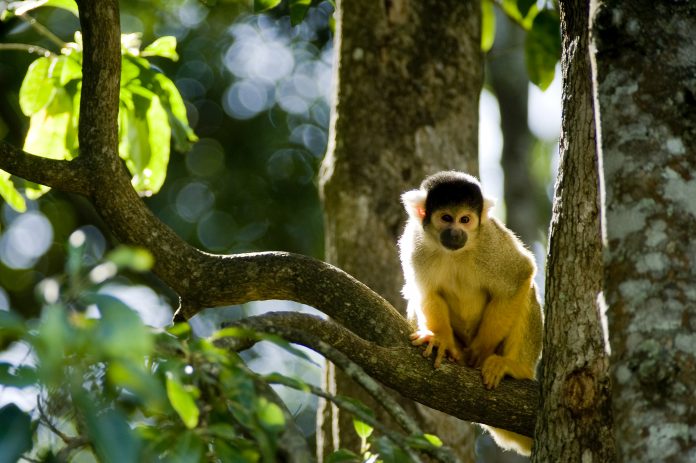A new report exposes how deforestation is caused by illegal cattle farming in the Amazon
Earlier this year, the July and August fires in the Amazon caught the attention of the world. There were calls from State leaders and activists to President Bolsonaro of Brazil, asking him to recognise the unique power of this rainforest in the ongoing struggle against climate change.
However, illegal cattle farming as the reason for the fires is nowhere near as globally recognised or understood.
One Uru-Eu-Wau-Wau man in his early 40s expressed his fear about the long-term impacts:
“Our survival comes from the forest. We will no longer have hunting. There will be no more trees.”
The report is curated by Amnesty International, who visited protected zones throughout 2019:
1. The Karipuna and Uru-Eu-Wau-Wau Indigenous territories
2. The Rio Ouro Preto and Rio Jacy-Paraná Reserves (in Rondônia state)
3. The Manoki Indigenous territory (in Mato Grosso state).
Why do people set fire to the rainforest?
Setting fire to the rainforest clears the land and makes the scorched area pasture-ready for illegal cattle farming. Brazil has the most cows of any country in the world, supporting an immense domestic and international beef export market.
Trade, an NGO, found a link between Brazil’s cattle exports and 65,000 – 75,000 hectares of deforestation every year. They found that beef exports from the Amazon over three years after 2015 caused 179,000 hectares of deforestation alone.
The Brazilian government strategy can be described as careful ignorance. They have the legal measures in place for meat-packing companies to theoretically monitor their supply chain, and make sure that cattle is not coming from places in the Amazon region.

Especially places that are the sacred land of Indigenous groups, who are loosely protected by State commitments to international treaties. Since President Bolsonaro came to power, the amount of Indigenous land stolen by companies for illegal cattle farming has increased. They lost 220km² (a surge of 106.8% compared to the same period in 2018) beginning January 2019, when Bolsonaro gained political control of Brazil.
The supply chain agreements were signed in 2009 by the State and meat-packers, but how are they working out?
The research released today (26 November) points out three ways that the Brazilian government just isn’t protecting the Amazon.
What are the failures in illegal cattle farming law?
1. Meat-packing companies do not care
These companies are found by researchers not to be monitoring where their cattle may have come from. They check whoever directly supplies them cattle, but when it comes to where these animals were raised and grazed, that information is left unexcavated. And what’s more, there is no pressing consequence from President Bolsonaro on those companies who would rather ignore their potential contribution to deforestation.
Then, farmers are able to send the cattle from a legally acceptable property that isn’t on protected land in the Amazon, whilst raising these cows illegally their whole lives.
2. Farmers found a loophole: ‘Cattle laundering’
Farmers might be moving cows like chess pieces in an illegal game, but they are also making fake documents to support their moves. Farmers might use documents from a legal property for cattle grazing to sell cattle that was raised on an illegal property in the Amazon.
They can also allow someone else to graze cattle on their illegal property when the other person has their own valid documents for a legal grazing area and can sell them as if they were raised on their own land.
3. Some meat-packing companies haven’t signed anything
Whilst meat-packing companies have been found not to work hard enough to figure out what’s happening in their beef supply chains, they also might not even be obligated to, legally speaking. In 2017, researchers discovered that 30% of meat-packing companies killing cows in the Amazon had never signed agreements on deforestation.
This leaves them in a limbo, able to continue grazing and razing, without the need for the strategies we see in point one and two. This is another reason that public accountability is essential to the prevention of rainforest destruction – frustrating since monitoring is impossible. The State refuses to allow the public to see information about cattle and the environment, e.g. the Rural Environmental Registry, which means that no-one can externally pressure companies to follow the law if they don’t know who’s breaking it.
What is happening to Indigenous people because of Amazon deforestation?
The Uru-Eu-Wau-Wau Indigenous territory lies in Rondônia state and has 1,867,000 hectares within it. It is protected by the Pacaás Novos National Park, which overlaps nearly exactly over this territory, with a population of 200 within it. They choose isolation from non-Indigenous people, living their lives by subsisting on the richness of the forest.
Since January 2019 when Bolsonaro came into power, there has been a significant rise in attempts to carve away some of this land by farmers and criminal groups.
In the report, Amnesty researchers described the increasing violence around illegal cattle farming:
“In April 2019, Uru-Eu-Wau-Wau people told Amnesty International that in January 2019 they confronted about 40 intruders, who were armed with sickles and machetes, cutting a path into their territory about two kilometres away from one Indigenous village and just beside the road they use to enter and leave their territory.
“When told to leave, the intruders allegedly replied that more intruders would be coming and threatened to kill the Indigenous children.”

He explained that in May 2019 he and his colleagues were surrounded by 32 men while repairing the road accessing the Uru-Eu-Wau-Wau Indigenous territory and Pacaás Novos National Park.
A Federal Environment worker described his experience of violence too when he was helping colleagues to repair a road near the Uru-Eu-Wau-Wau territory:
“We were surrounded by intruders. Thirty-two men, mostly hooded, arrived by foot behind us, with bottles with gas. They gave me documents of the association buying land [inside the protected areas]. They wanted us to stop repairing the road. There was a lot of shouting, these threats, calling us thugs.
“It lasted for one hour and fifteen minutes. It was tense. [Weeks later, after informing them the documents were not valid], they started sending us audio messages with threats.
“One message said: ‘We have respected you – until now’.”
According to official data, the number of fires inside Indigenous territories in the Amazon in the first nine months of 2019 is the highest since 2011 and has doubled in comparison to the same period in 2018. Illegal cattle farming appears to have several loopholes in Brazilian law, and money continues to be made despite the lasting impact.
What will the world look like if the Amazon continues to burn at this rate?
Read the report findings here.











